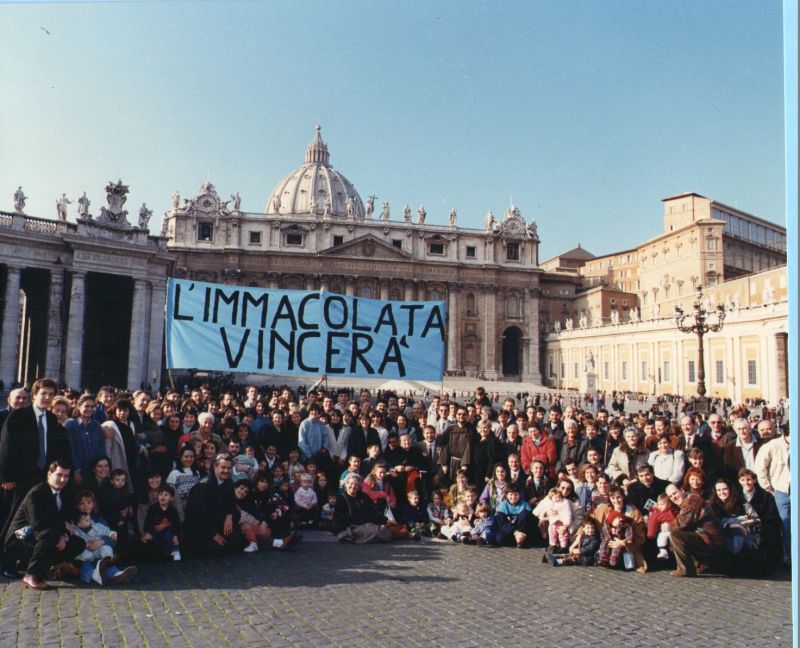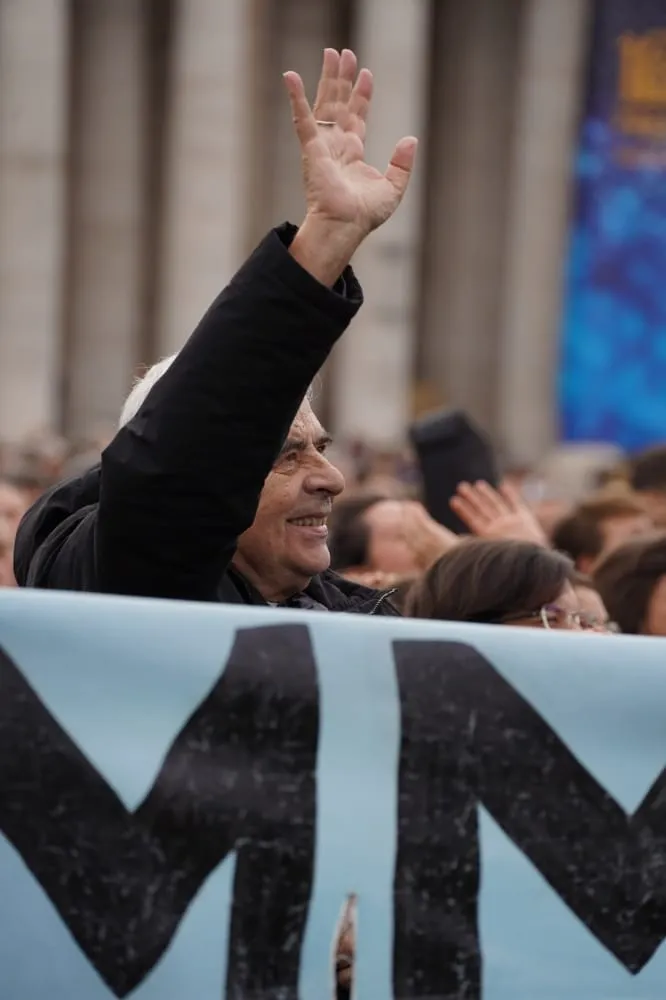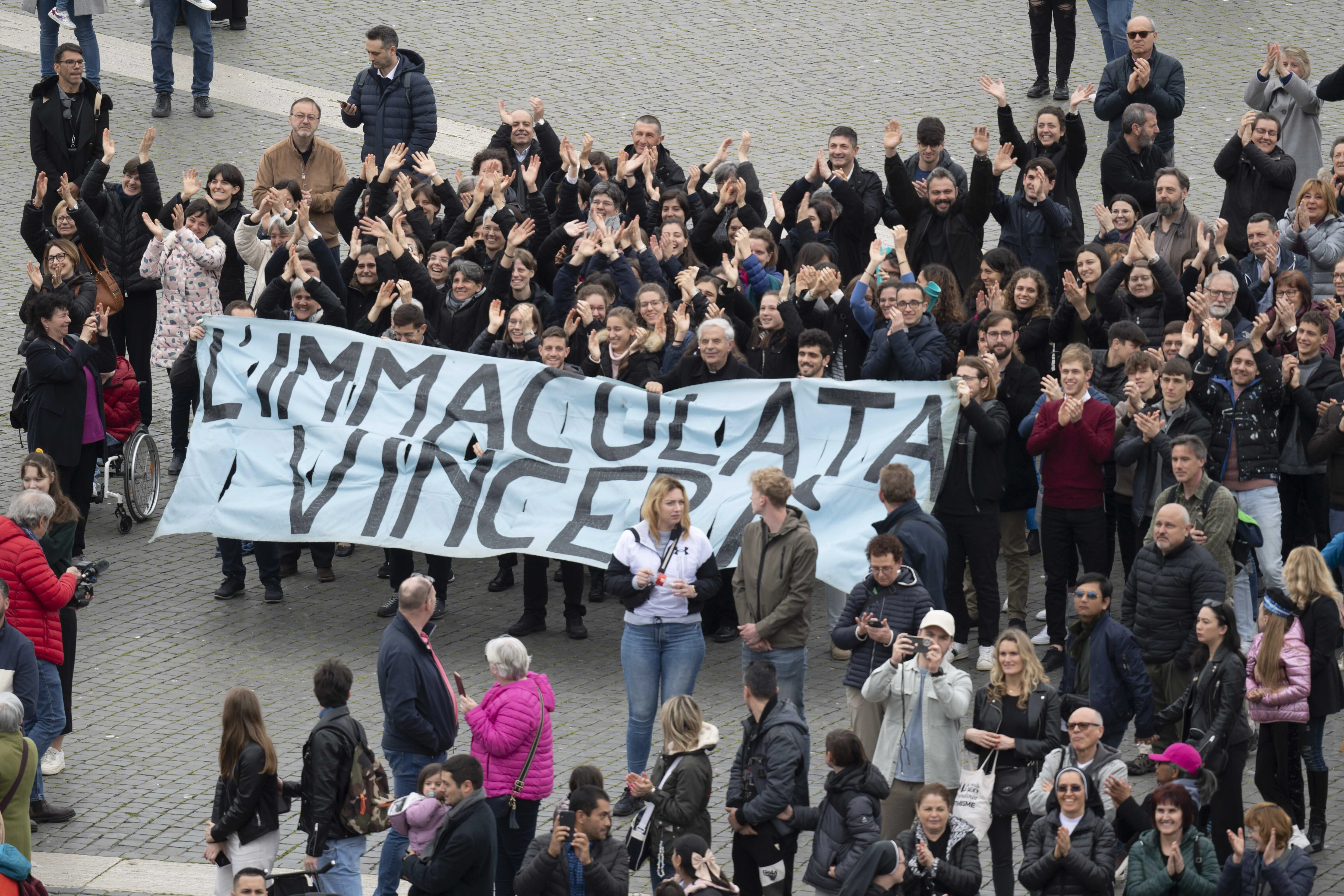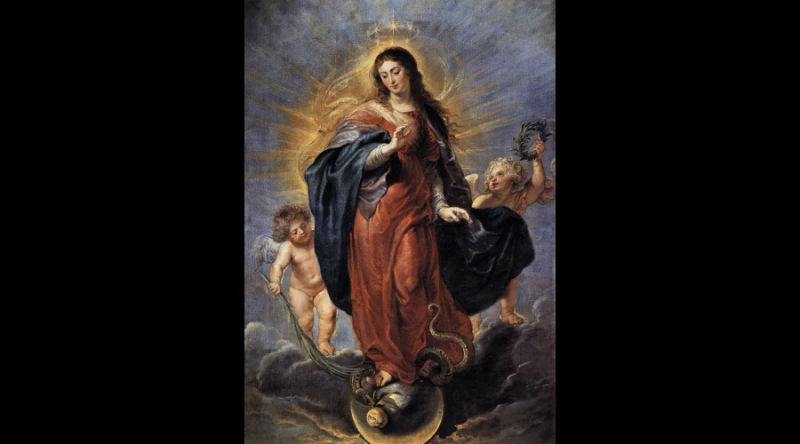
The Immaculate Conception Revisited
In December 2018, I wrote an article for Catholic World Report on the Immaculate Conception: “Why I came to believe that Mary was conceived without sin.” I argued that it was (1) a matter of […]

In December 2018, I wrote an article for Catholic World Report on the Immaculate Conception: “Why I came to believe that Mary was conceived without sin.” I argued that it was (1) a matter of […]

On the Readings for the Solemnity of the Assumption of the Blessed Virgin Mary, August 15, 2018 […]

 The House of Mary community poses for a photo on Dec. 8, 1994, in St. Peter’s Square, the first time they brought their blue banner with the words “The Immaculate Conception will Triumph” to the Angelus with Pope John Paul II. The group has continued to bring the banner to every Sunday Angelus for 29 years. / Credit: Comunita Casa di Maria
The House of Mary community poses for a photo on Dec. 8, 1994, in St. Peter’s Square, the first time they brought their blue banner with the words “The Immaculate Conception will Triumph” to the Angelus with Pope John Paul II. The group has continued to bring the banner to every Sunday Angelus for 29 years. / Credit: Comunita Casa di Maria
Vatican City, Dec 8, 2023 / 15:30 pm (CNA).
“The Immaculate Conception will triumph”: These are the words displayed, in Italian, on a blue banner held every week in St. Peter’s Square during the Angelus — a prayer honoring Mary — for 29 years.
The banner’s declaration recalls the Marian spirituality of St. Maximilian Kolbe, who had a special devotion to the Immaculate Conception.

Since the feast of the Immaculate Conception on Dec. 8, 1994, members of the Casa di Maria (“House of Mary”) community have held the sign “L’Immacolata Vincerà” at the pope’s Angelus on Sundays and Marian feast days.
“Every time we hold the banner in the square we affirm that life is a struggle and the Christian’s joy is a victory … the joy not of those who pretend that all is well but the exultation of those who believe that evil does not have the last word because God is greater,” Father Michele Reschini told CNA via email.
The priest, who oversees the community’s youth formation, said the House of Mary is inspired to be present at the Angelus every Sunday as a sign of its filial affection for the pope and support for his magisterium and apostolate.
“Moreover, this banner is meant to be a small sign of a great hope,” he explained. “In such an ecclesial place and moment as the Angelus in St. Peter’s Square we want to express that Our Lady is present in the heart of the Church.”
There are frequently tens of thousands of people in attendance at the Sunday Angelus with Pope Francis.
The custom of popes publicly praying the Angelus at midday on Sundays goes back to 1954, when Pope Pius XII was convinced to do so by his friend, Italian Catholic doctor and lay leader Luigi Gedda.
The House of Mary community, founded in 1990, was supported in its early days by Cardinal Andrzej Maria Deskur, a Polish cardinal working in the Vatican and a friend of St. John Paul II from his seminary days.

Originally a Marian prayer group, the community is made up of priests, consecrated women, families, and young adults.
Deskur had written about St. Maximilian Kolbe and his Marian spirituality in a meditation for a novena to the Immaculate Conception in 1987.
“The Mariology of St. Maximilian Mary Kolbe could be summarized in the phrase frequently repeated by the saint in the face of the difficulties he encountered: ‘The Immaculate Conception will triumph,’” the cardinal wrote.
Deskur invoked the phrase again in a March 25, 1994, audience with John Paul II, to whom he presented the House of Mary community and its founder, Father Giacomo Martinelli.
“The Immaculate Conception will triumph” became the unofficial motto of the House of Mary, and almost nine months later, on Dec. 8, 1994, the group brought their blue banner, for the first time, to the Angelus in St. Peter’s Square.
At an Angelus the following month, Pope John Paul II pointed to the sign and said, “I, too, am convinced that the Immaculate Conception will triumph!”
Over the years, the group has also brought its banner on some of the pope’s apostolic trips within Italy, estimating that it has traveled more than 96,000 miles to over 38 cities.
Pope Francis has also been supportive of the group and its presence at his Sunday Angelus.
“The House of Mary is a community that wants to live the Gospel in faith and to witness to the Gospel through fraternal life in a world that increasingly loses the gift of belief and the gift of fraternity,” Reschini said.
“Our Lady has always been present in the life of Jesus, from the manger to Calvary. So she is always present in the life of the Church, from its beginning to its end,” he continued. “This faithfulness of hers gives us hope, this presence of hers is a guarantee of victory. It impels us to believe that his faithfulness is stronger than our infidelities, and in this faithfulness the Church can always find herself faithful to Jesus Christ.”
“Inside the storms of modern times; in the midst of the icy winds of secularism, modernism, and relativism; under the threats of apostasy and idolatry, the Church remaining with Mary will triumph, will triumph because like Mary and with Mary, it is faithful to Christ to the end.”

A firefighter scales a long ladder to the top of a nearly 40-foot-high column to pay tribute at dawn to the Blessed Virgin with a wreath of flowers on Dec. 8, 2023. / Credit: Daniel Ibanez/CNA
Rome Newsroom, Dec 8, 2023 / 13:30 pm (CNA).
On the… […]

Pope Francis waves from the window of the Apostolic Palace as he gives his Angelus address for the solemnity of the Immaculate Conception on Friday, Dec. 8, 2023. / Credit: Vatican Media
Vatican City, Dec 8, 2023 / 07:45 am (CNA).
Pope Francis … […]

Procession from Saint-Jean Cathedral to Fourvière Basilica in Lyon, France, on Dec. 8, 2022. / Credit: Diocèse de Lyon
Paris, France, Dec 8, 2023 / 06:00 am (CNA).
Every year, the city of Lyon in southeastern France celebrates the “Festival of … […]

null / Shutterstock
CNA Newsroom, Dec 9, 2022 / 14:00 pm (CNA).
On Dec. 8, the day the Church celebrates the solemnity of the Immaculate Conception, thousands of women in different countries around the world gathered to pray the holy rosary for… […]

A detail from Francisco de Zurbarán’s painting “The Immaculate Conception” (1628–1630) / Benedictine College YouTube channel
Washington, D.C. Newsroom, Dec 8, 2022 / 13:45 pm (CNA).
Benedictine College in Atchison, Kansas, is kicking off a new… […]

Pope Francis visits the statue dedicated to the Immaculate Conception near Rome’s Piazza di Spagna Dec. 8, 2022. / Credit: Daniel Ibáñez / CNA
CNA Newsroom, Dec 8, 2022 / 08:42 am (CNA).
On Thursday, Pope Francis publicly visited the statue ded… […]

 ‘Immaculate Conception’ by Peter Paul Rubens, circa 1628. / null
‘Immaculate Conception’ by Peter Paul Rubens, circa 1628. / null
CNA Newsroom, Dec 7, 2022 / 14:00 pm (CNA).
While the dogma of the Immaculate Conception would not be proclaimed until 1854, the Church in Spain has long venerated Our Lady’s Immaculate Conception.
In 1585 a miracle attributed to the Immaculate Conception allowed the Spanish troops to win the Battle of Empel in Holland.
As part of the Holy Roman Empire’s House of Habsburg in the 16th century, Spain governed what was known as the Spanish Netherlands. However following the Protestant Reformation, the Protestant provinces revolted against Spanish rule, sparking a prolonged conflict for control of the region known as the Eighty Years’ War.
On the night of December 7-8, 1585, the situation of the troops of Emperor Philip II of Spain looked desperate.
The Tercio Viejo de Zamora infantry regiment commanded by Francisco Arias de Bobadilla was trapped by enemy forces at the Empel dike off the island of Bomel. The morale of his troops was low due to hunger and cold.
Bobadilla called his captains and ordered them to pray with faith so that God would deliver them from the dreadful fate that awaited them.
Soon, a soldier who was trying to dig a hole to take refuge from the wind and cold uncovered a wooden tablet with the image of the Immaculate Conception painted on it. Immediately, the image of Our Lady was taken in a procession to a nearby church.
After this act of devotion of the troops, a strange, miraculous event occurred: the surface of the waters froze almost in an instant. The Spanish troops were able to walk on foot over the ice and defeat the rebellious Dutch Protestant forces.
The same day, the Immaculate Conception was proclaimed patroness of the infantry of Flanders and Italy. The Virgin’s patronage of all the Spanish infantry, the oldest in the world, did not become official until 1892 by a Royal Order of the regent María Cristina.
On Dec. 8, 1854, Pope Pius IX proclaimed the dogma of the Immaculate Conception of the Virgin Mary through the bull Ineffabilis Deus, declaring that “the doctrine which holds that the most Blessed Virgin Mary, in the first instance of her conception, by a singular grace and privilege granted by Almighty God, in view of the merits of Jesus Christ, the Savior of the human race, was preserved free from all stain of original sin, is a doctrine revealed by God and therefore to be believed firmly and constantly by all the faithful.”
But long before that, Spain was especially noted for its defense of the Immaculate Conception of Mary.
The most remote precedent is found with the Visigothic monarch Wamba, who distinguished himself at the XI Council of Toledo in 675 as “defender of the Immaculate Conception of Mary.”
King Felipe IV, who reigned from 1621 to 1640, urged Pope Gregory XV to proclaim the dogma, though without success.
In 1761, King Carlos III established the “universal patronage of Our Lady of the Immaculate Conception in all the Kingdoms of Spain and the Indies.”
The Order of Carlos III has been the highest civil decoration awarded in Spain since 1771. Its emblem is an image of the Immaculate Virgin.
The statue located in the Spanish Plaza in Rome was placed there in view of the defense of this Marian dogma by the Spanish through the centuries.
In the 19th century, a special privilege was granted to the priests of the Church in Spain to wear a chasuble of the purest shade of blue on the solemnity of the Immaculate Conception.
This is a notable exception, since the General Instruction of the Roman Missal establishes that the liturgical colors are white, green, red, violet, black and rose.
The use in Spain of the blue chasuble, however, has been on record since the 17th century, long before the proclamation of the dogma. Pope Pius VII first recognized it in 1817 for the Seville Cathedral for the feast of the Immaculate Conception and its octave.
This privilege was extended to the entire Seville archdiocese in 1879. Four years later, it was extended to all the dioceses of Spain.
In 1962 it was established that the liturgical vestments of this color were to be used in Spain only on the day of the solemnity and in the votive Masses of the Immaculate Conception.
This story was first published by ACI Prensa, CNA’s Spanish-language news partner. It has been translated and adapted by CNA.
© Catholic World Report